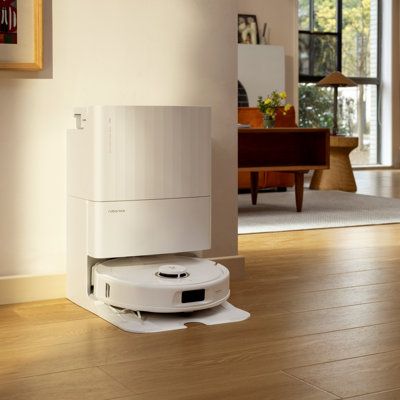
I’ll be the first to admit that personal finance isn’t one of my strong suits. Budgeting and money management is simply one of those topics we avoid just because it adds so much stress to our lives. If just the thought of checking your bank account’s balance and starting to invest fills you with anxiety, you’re not alone. According to a recent survey, 30% of Americans are “constantly” stressed out about money. We get it.
The bad news is keeping financial matters to yourself can cause more money problems, including more stress and heartbreak. We’ve all made mistakes with taking on one too many student loans, one too many credit cards, and not enough time learning about how they work and how to pay them off. The good news is there’s always time to improve your finances, and the best time is now. With 2019 right around the corner, I’m sure you’re already thinking about what your New Year resolution should be.
Well, why not make it the year that you dominate your finances? The best time to start a goal is right now, so let this be your catalyst to tackle the financial stress once and for all.
Ready to take control of your money? Here are ten financial mistakes you can fix today.
1. Not having an emergency fund

An emergency fund is what saves your budget when you have to pay for a home damage or you need to cover a leave from work. If you set aside money in your emergency fund, then you can handle the unexpected when the time comes. Your emergency fund makes it easier to deal with the stressful financial situations in your life because you know you have it covered.
For your Emergency Fund goal, we calculate three months of take-home pay (salary minus taxes, including Social Security and Medicare taxes). Not sure where to keep your emergency fund? Ellevest is a company that believes their clients can’t afford any investment risk with their emergency money, so they place all assets in the Emergency Fund goal in FDIC Cash. This means that these assets are insured by the Federal Deposit Insurance Corporation, which the U.S. government describes as “an independent agency of the United States government that protects you against the loss of your insured deposits if an FDIC-insured bank or savings association fails. FDIC insurance is backed by the full faith and credit of the United States government.”
The interest rate on the funds in this goal is 0.01% (or 1 basis point). It’s a very low interest, but Ellevest believes that a safety net shouldn’t be subject to market downturns, so they don’t charge a management fee for assets in the Emergency Fund goal. Yup… Free. Interested? No commitments, no penalty for canceling. Get started here.
⇒ Start Your Emergency Fund With Ellevest
2. Letting your partner manage the money without your involvement

Very 1964… and not in a cool way. Few of us think we’ll break up or get divorced (or that tragedy will strike), it happens. You don’t want to be learning about your financial situation while you’re in shock.
Start asking questions. Have a conversation. Don’t let politeness get in the way of understanding your finances. Research shows that both men and women are shy of asking for explanations of financial terms; even so, men still invest while women more typically won’t. (I agree: it’s hard to know which is the worse outcome. So please just talk about it and ask questions. Get involved.
3. Not having a budget

A lot of us aren’t sure where to start when it comes to roping in our budget and being more strict about our spending. So, how do you know what to spend on what? Some people love planning every penny. For the rest of us, all you really need for a healthy relationship with your money is a solid, high-level framework for where it should all be going.
When you first create your = budget, you may not know how much to put in each category in your budget. It helps to use the 50/30/20 rule for your money comes in.
Here’s how and why to 50/30/20 your money.
4. Not taking into account your greater longevity in your investing plan.

If you’re married, you’re likely to live 5+ years longer than he does. Does your financial plan take this into account?
Even if both of you are “moderate risk” kind of investors, that means different things if you’re living longer. And newsflash: women live than men, on average, 6-8 years longer on average so we legitimately need more retirement savings than men. (Right now, we actually retire with two-thirds as much.) Oof.
With retirement potentially only a decade or two away, now’s the time to get real on what you want yours to look like. Start by dreaming up your ideal lifestyle — get really specific. Want to move to a ranch? Which one? What does the real estate market look like in that town? What’s the cost of living? How will you fill your days? What do those things cost? No matter your circumstances, one piece of advice that holds true for everyone: You need to start thinking seriously about saving for retirement as soon as possible—and having actual numbers to aim for can make doing so a whole lot easier.
If you have questions, our friends at Ellevest can also help you understand how much you might need. It’s a quick, streamlined sign-up process to get your personalized plan.
⇒ Get Started Investing With Ellevest
5. Not rolling over that old 401k

So… that 401(k) from your old employer is still your money. What are you going to do with it?
You could leave it where it is, but you won’t be able to contribute any more to it after you’ve left. If you change jobs a lot, that’s a lot of old accounts to keep track of. And while many employers pay at least part of your 401(k) plan’s administration fees, there’s no guarantee they’ll keep doing that if you leave.
You could cash it out, but wait — this option comes with massive tax penalties. Like potentially massive. If you’ve decided that neither of those options is right for you, that leaves a 401(k) rollover.
What’s a 401(k) rollover, you ask? Rolling over a 401(k) means transferring the money to another tax-advantaged retirement account. This could include many different types, but the two most common examples are your new employer’s 401(k) (if their plan allows it) or an individual retirement account (IRA).
If you have a 401(k) or an IRA sitting there, and you want to get it to a place where you can track it, how about starting now? Ellevest, a wealth management platform targeting women, can help. You can get a rollover in under 10 min.
⇒ Get Started Investing With Ellevest
6. Waiting until a less risky time to invest

“The market feels iffy.” Or “I feel like I need to get through that stack of reading on the markets.” There are many, many reasons to wait to invest. But timing the markets is pretty much impossible, even for people who do it full-time. Investing steadily over time helps to smooth out the market’s ups and downs…and is historically a vastly better alternative than keeping your money in cash.
An important financial lesson that many fail to understand: It’s never too early to begin investing.
There’s a rampant myth that you need to be rich to start investing. The truth is you don’t need to have a lot of cash to start investing. You can start with as little as $5, $20, $50 or $100 and grow your money from there. The key to building wealth is to be consistent and to automate your deposits. Don’t know how much to start with? The 50/30/20 budget can help you figure it out.
⇒ Get Started Investing With Ellevest
7. We think we have to “know everything” before we invest.

I don’t know about you, but I loved turning over the test at school and seeing that A. And we women can carry that through our lives…wanting to be knowledgeable enough “to get the A.” As a result, so many women I speak to have a big stack of “investing reading,”that they really are planning to do, sitting on their bedside table.
And while we can all stand to know more about compound interest, or what standard deviations are, or what beta is — we will never know everything. I would never argue against more financial education, but waiting til we “know everything” is very expensive. I’ve seen it deprive women of years of investment opportunity. (See #10 for exactly how expensive this can be.)
Interested in learning more? You can get a personalized portfolio from Ellevest (for free) in under 10 min. And it’s made by women, for women, with portfolios that allow you to invest in companies that support women.
I don’t know about you, but I loved turning over the test at school and seeing that A. And we women can carry that through our lives…wanting to be knowledgeable enough “to get the A.” As a result, so many women I speak to have a big stack of “investing reading,”that they really are planning to do, sitting on their bedside table.
And while we can all stand to know more about compound interest, or what standard deviations are, or what beta is — we will never know everything. I would never argue against more financial education, but waiting til we “know everything” is very expensive. I’ve seen it deprive women of years of investment opportunity. (See #10 for exactly how expensive this can be.)
Interested in learning more? You can get a personalized portfolio from Ellevest (for free) in under 10 min. And it’s made by women, for women, with portfolios that allow you to invest in companies that support women.
Money Mistake #8: We forget our most important asset: ourselves.
8. We forget our most important asset: ourselves.

It’s not your stocks; it’s not your bonds; it’s you. And this means that every action you take can have a significant impact on your financial profile. Think about it: One great way to have more money for retirement is to earn more money. If you are like the typical woman in the U.S., you are making 78 cents to a man’s dollar (even less for women of color). Get to that dollar and you’ve just earned a 28% return on what may well be your biggest asset: your salary.
And to put this in context, according to our sources at Ellevest, if you’re earning $85,000 a year and you get that raise, that can mean you earn another $1.1 million over the next 40 years. Now turn around and invest that puppy (no buying that Range Rover) and you may have another $1.2 to $2.3 million – or more – at the end of 40 years.
I hate asking for a raise, too, but this is A LOT of potential return on one-meeting you need to have this year. Do it. Here are a few things every woman should know before going in.
9. Setting resolutions and goals but not investing for them

A goal that you’re not actively planning for is just a dream. You may have seen the research that writing the goal down can substantially increase your chances of achieving it; writing it down, setting aside money for it, regularly adding money to it and investing toward it? Well, there’s likely no stopping you.
Some rules of thumb: at Ellevest, they recommend that you have 2 years of salary (net of taxes) set aside before you launch your new business. Having this money give you the runway you need to make it work. And for retirement, your goal should be to get to 10 to 15 years of your pre-retirement salary.
See what goes into your goals with Ellevest here.
10. The biggie: We (significantly) underestimate the costs of waiting to invest

Ask yourself this: Are you doing the most with your money? Is it working FOR you? If you have to think about it a minute. You’re not investing. We, women, have a tendency to underestimate the costs of waiting to invest.
We wait. We wait till we know more about invest. We wait for the right time to invest. We wait til the market is quieter, we wait til we get the raise, we wait til we get that raise — because we’re busy. We wait til we can talk to our partner about it. We wait because it can be such a weird topic. We wait because the last time we talked about it, we got in a fight.
So we wait.
And it costs us. So much. Quick calculation: again, say you’re making $85,000 a year, saving 20% of your salary, and putting it in the bank instead of investing it. Wait five years to invest and that just cost you more than $170,000 when it’s time to retire. Wait ten years, and you’re down more than $337,000.
And, in case you’re wondering, that cost of waiting is almost $100 a day. Every day.
I know it’s a hassle to start and it’s kind of stress-inducing. That’s why the entire raison d’etre at Ellevest is to help you get invested so that you can close your personal investing gap. Believe us, nights, weekend, too many cups of coffee…they’re fundamentally rethinking investing for women, and they’re inviting you in. Investing. Don’t ignore.
Ready to take control of your financial future?
Sign up to get your free financial plan now. In just 10 minutes, Ellevest can help you figure out how much you should be saving now so you can sit back, relax, and focus on your life goals. Try it here.*
Here are more personal finance topics for you…
Here are more personal finance topics for you…
The One Money-Habit All Wildly Successful Women Share
The Personal Finance Tips Everyone In Their 20s Should Follow
3 Reasons Why You Need a Roth IRA- Even If You Have a 401(k)
Questions? We’re here to help. Leave us a comment and we’ll get back to you!







